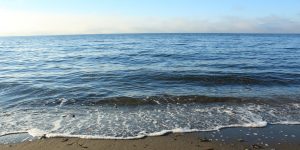Abstract
We have conducted an analysis based on 1m sea level rise and 2m rise future scenarios. Intergovernmental Panel on Climate Change (IPCC) estimates Global Mean Sea Level will rise 1m in 2100 (p.1140). Furthermore, IPCC explains how the rate of rising sea level will escalate after 2100 (p.1141) and how it depends on our action towards climate change taken in the 21st century. Therefore, we are not sure exactly when the 2m Global Mean Sea Level is going to take place. However, sea level rise will be increasingly problematic in coming years all around the world, so it is important to know the consequence before it hits to prepare ourselves.
In this context, we estimated the inevitable future loss of land in the Metro Vancouver area. Sea level rise will severely affect Richmond, Delta, Surrey and riverside of Port Coquitlam. As the majority of croplands in Metro Vancouver are also located in these areas, we conducted spatial analysis to offer insight into the impact of sea level rise on agricultural production. Agriculture in this metropolitan region makes a significant contribution to the BC economy, with over $789 million in gross annual farm receipts in 2010 (27% of the BC farm total) on only 1.5% of the province’s agricultural land. The region’s farmers supply over 130 different farm commodities including a wide array of fruits, vegetables, dairy, poultry and other livestock products (Metrovancouver.org, 2019). Therefore, our projection also offers relevant insight on the socio-economic impact too. Our maps clearly show the future submerged area and cropland visually. The changes represented in our maps would take place in the course of time; it is an unavoidable future state.
map1_sealevelrise : showing the low elevation locations in Metro Vancouver
map2_cropland_affected: showing the overlap between low elevation and cropland area.
map3_cropland_affected_1m&2m: showing the cropland directly affected by sea level rise (1m scenario and 2m scenario)
map4_agri_capa_sealevel: showing the composition of land in Metro Vancouver in terms of agricultural capability
map5_agricultural_capability_affected_1m&2m: showing the agricultural capability of submerging lands
----------------------------------------------------------------------------------------------------------------------------------------------------------------------
Individual Analysis
In this project, we wanted to estimate the potential impact of the rising sea level in Metro Vancouver. Our goal was to elucidate how sea-level rise will bring a negative impact on agricultural land in BC.
However, at first, I wanted to analyze the potential impact of melting glaciers in the Himalaya regions. It will cause flooding as well as a water shortage afterward. I had determined to conduct such analysis but when it comes to finding data through the internet, it was very difficult or impossible. I looked through the Nepal government's statistic site, database site, etc; however, I could not find any high resolution, relevant data. When this is a case, there is no way to simulate the situation in the computer, so that I learned the importance of thickness of data input.
By working to make those maps, I engaged with ArcGIS the longest time in the whole semester. This is because I needed to find data, organize data and refine data without any instruction. The part of GIS operation I had not understood became clear as I worked on this project. For example, creating a Geodatabase is a necessary step to not lose existing data that we edit, I had forgotten to create one in the first place. Luckily, my teammate notices the error before anything happened. The point is, it was a great realistic scenario to experiment myself on how to conduct GIS analysis. I learned how to approach GIS analysis from scratch with this project.
Organizing team
As I mentioned above, I conducted this project as a team. I worked with two other students. We did not know each other before but it went smooth without any issue. That is because we worked on each part diligently. My part was to decide where we are going to head (planning) which includes going through numerous data sets on the web, finding one that fits our purpose and largely contributing to making the framework of our project. We stirred the ship together to where we want to arrive but predominantly I made the ship first. It was a creative process and was a lot of fun to see available data and what we can possibly derive from it. I did not use census data, so next time I want to conduct analysis that also incorporates tabular data as there are much more data available in that format.
We as a team communicated very well. Despite we did not know each other before, we enjoyed working together.


Learning Significance